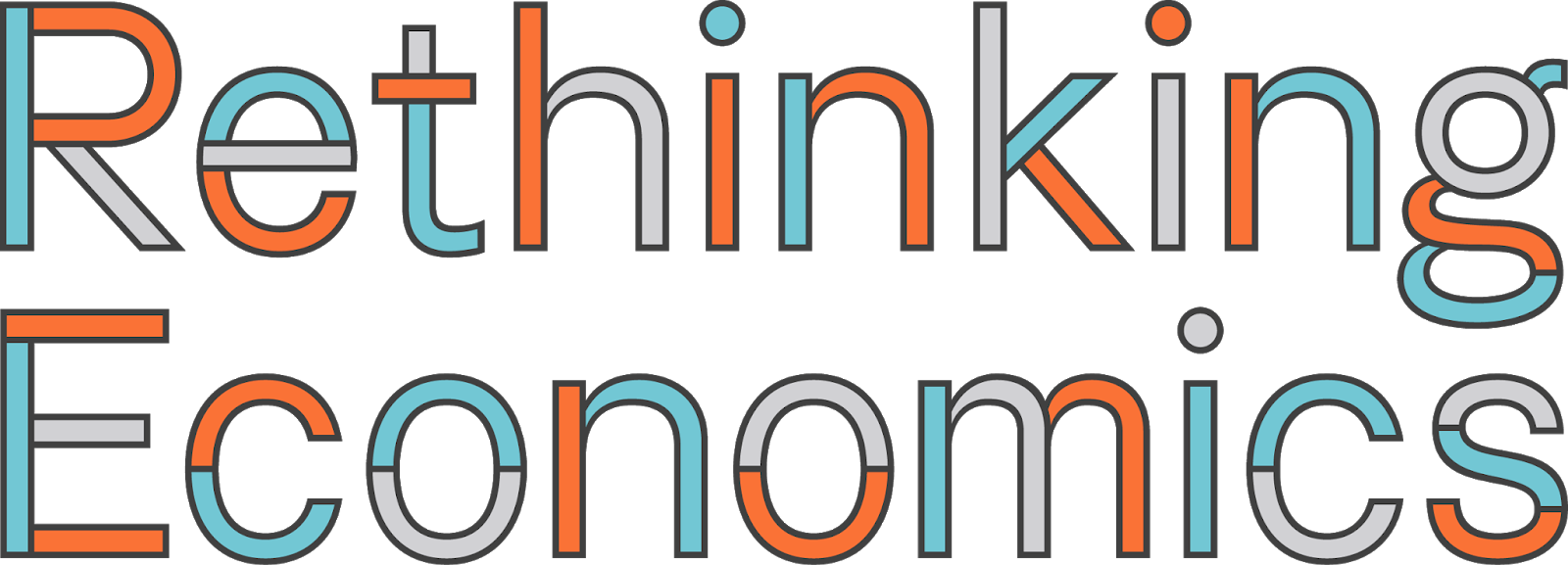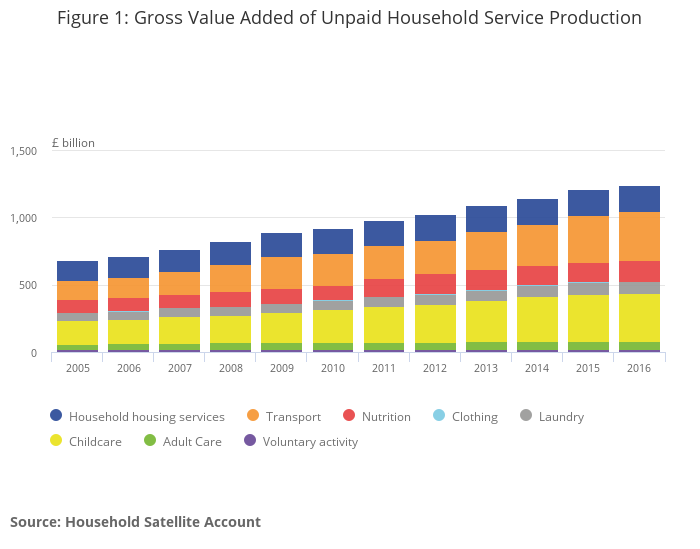Why Feminist Economics is Necessary
Rethinking Economics, 2020
Pluralist Showcase
In the pluralist showcase series by Rethinking Economics, Cahal Moran explores non-mainstream ideas in economics and how they are useful for explaining, understanding and predicting things in economics.


Why Feminist Economics is Necessary
By Cahal Moran
Feminist economics is a key component of the movement for pluralism in economics and one that has, to some extent, been acknowledged by the mainstream of the profession. It seeks to highlight issues which affect women because (it claims) they have not traditionally been recognised in a field dominated by men. On top of this, it seeks to carve out a space for women in the discipline, both for intrinsic reasons of fairness and diversity and because it means that women’s issues are more likely to be highlighted going forward.
As far as I can see there are two major themes of feminist economics. First is the degree of unpaid labour done by women, of which the canonical example work in the household but which also includes lesser known issues like affective, cognitive and emotional labour, all of which I will explain later in this post. Second is the discrimination women face in the economy, particularly in employment and pay, which can take many forms. Each of these deserves its own post, so in a two-part edition of the pluralist showcase I will discuss the empirical work establishing the existence and extent of these in turn.
Unpaid Labour
Feminist economists argue that women perform a lot of labour which goes unpaid and unnoticed but which keeps the economy, society, and individual families afloat. Whether this is work in the household, which is simply not remunerated because it is not in the market, or whether is the gendered expectations which push women into certain tasks and occupations, women tend to do work which is not rewarded as much as men’s work - either socially or financially. By focusing on work for wages – and with many textbook examples classically men’s jobs, such as those in manufacturing or construction - economic theory has harbours an implicit male-centred bias.
It was Marylin Waring’s 1988 book If Women Counted which brought women’s work into the view of the profession and policymakers, arguably even marking the birth of feminist economics itself. Previously women had been thought not to work at all but as Waring meticulously detailed, women perform a vast array of tasks, mostly in the home, which are obviously work: cooking, cleaning, childcare, travel, adult care, and more. This was reflected in national income accounts across the world, which went on to influence policy. Not too long ago the ONS finally started measuring these things with time-use surveys. These measure how long members of a household spend performing each activity, and this time is then multiplied by a comparable wage were such activity to be done in the private sector. As of 2016 their estimated value to the UK economy is a not-to-be-sniffed at £1.24 trillion, or 63% of GDP, as shown by Figure 1.

Although the UK data have too short a time frame to draw many conclusions, studies from the USA go back much further and they show that unpaid labour affects our interpretation of growth in interesting ways. It tends to be counter-cyclical, rising in recessions to offset the decline in the market economy and making the economy appear less volatile. This is because in recessions people tend to eat at home instead of going out; repair things instead of replacing them; and some even start to grow their own food. Adding household production to GDP also reduces income inequality, since low-income households engage in it more. The value of unpaid labour usually grows at the same rate as standard GDP (almost by construction) so it does not much affect overall growth, although including it does make the entry of women into the workforce less noticeable and so reduces long-term growth over the latter half of the 20th century.
How we consider different types of labour affects our interpretation of policy, too: the always excellent Women’s Budget Group produced a report in 2017 showing that austerity disproportionately affects women. On the other hand, men tend to bear the brunt of recessions themselves. This much is obvious when you think about who does market and who does home labour: recessions spell a decline in the remuneration of the former, while austerity spells a decline in remuneration of the latter. Another, even more subtle point about how male versus female labour is valued is whether childcare and education should be considered ‘investment’, as opposed to physical infrastructure projects typically done by men: after all, they surely create wealth for the future, right?
Unpaid Labour at Work
It would be wrong to believe that unpaid labour stops at home, though. Modern research has looked at the ‘emotional labour’ performed by women at work. In particular, women are expected to do little, menial tasks that do not advance their careers but are necessary to keep the workplace going. These range from literally doing the housework in the office, too – keeping the place tidy, bringing in food – to taking minutes, supporting others, creating schedules and the like. Echoing household labour, this work is not as visible as, say, giving a presentation or leading a project. The latter is more likely to be done by men, and this is one explanation for the so-called glass ceiling. One in-depth study of 335 households showed that emotional labour was primarily done by women because they are generally more likely to be concerned about whether people feel valued, whether messages have been communicated properly, and whether teams are progressing as a whole. This is perhaps best summed up by the phrase “if I don’t do it, no one will”.
At the risk of introducing too many new concepts with pretentious names, there are a couple of other types of labour worth mentioning, both of which are inseparable from the rest. One is the Marxist concept of affective labour, which in plain English means ‘being nice, pleasant and accommodating’ and also ‘looking good’: think customer service as an archetypal example. Everyone has to do these things but once again, the burden tends to fall on women – consider the disproportionate time and money women spend on their appearance versus men both in leisure and in work.
Finally, there is the mental load, an idea popularized by French cartoonist Emma last year. This is simply the burden of not only having to perform all of the tasks detailed above but of knowing that they need to be done. It is primarily women who have a more complete awareness of the range of necessary tasks at work and at home, and whether they are finished or unfinished. This is cognitively taxing and should not be underestimated: according to the charity Bright Horizons, 86% of women “cop the mental load” at home, including mums who are the primary earners, and 52% say they are burning out from it.
A common response to all of this is to ask if women simply prefer to do these tasks or are better at them. This is an inherently difficult question to answer because it’s a chicken-and-egg problem: if women are socialised into doing these things, they will get better at them and also appear to have a ‘preference’ for them. Another way to look at the problem is to ask how it affects women and their careers, and the results are not encouraging. A review of 183 studies on exhaustion concluded that women are more likely to feel exhausted than men and their rates of burnout are 80 per 1,000 higher. Furthermore, an experiment showed that emotional labour is not only expected of women; it is necessary for them to attain the same evaluations as men who haven’t done them! In summary, the fact that women are measurably exhausted and are asymmetrically punished for not doing this labour makes it hard to believe it is all a result of voluntary choices.
It would certainly be nice to get some more systematic statistics on all of this since many – albeit not all - of the cited studies above are detailed studies of relatively small numbers of people (not that I’m one to denigrate qualitative analysis, which is crucial for social science). That such data has not typically been collected is perhaps a reflection of the gender bias in the first place. I would bet good money that was such data to be gathered, it would simply confirm that women do most of this work. A moment’s reflection on your own workplace will likely support this point, but I’m happy to be proved wrong.
Women do large amounts of labour which is rendered invisible by social and financial conventions, and economic theory has traditionally failed to recognise this. Better data and incorporation of these concepts into economists’ and society’s ideas of ‘labour’ would be a huge step forward. But the need for feminist economics doesn’t end there, and in the next post I will look at the discrimination women face in the economy and how it affects both their pay and career choices, including within the economics profession itself.
Discrimination and the Gender Pay Gap
One does not have to look far to find self-reports of discrimination by women, and the broad statistics show that women are underrepresented in the top paid professions such as lawyers, doctors, and tech executives; and even more so in positions of power such as politicians, CEOs, and judges. These facts are enough to make us sit up and take notice and for some, they may be sufficient to show there is a problem. Nevertheless, it is worth diving into the issue in more detail to show beyond any reasonable doubt that women’s position in the economy is harmed by discrimination.
Proving Discrimination
There are several clever approaches that have been taken in the literature to detect discrimination at each stage of employment and education, most of which involve modifying reported gender to see how it alters perceptions and outcomes. For example, researchers sent out CVs which were exactly the same except that one had a male while the other had a female name, and the CVs with a male name had a 50 percentage point higher chance of being offered a job at a more expensive restaurant. Similarly, students taking an online course (where you cannot see or hear the professor) were misinformed that their professor was a woman, and they evaluated them more negatively than those who took the same course but were (correctly) informed their professor was a man. Though it is impossible to blind people at every stage of most job application processes, an orchestra which was able to do so boosted female employment substantially.
Not only are women less likely to get employed; they are rated less favourably and offered lower salaries should they be employed. A study of science professors found that prospective academics were rated as more competent, hireable, and less desirable as mentees. Subsequently, the women were offered $26,500 on average while men were offered $30,200, and the women were less likely to be hired in the first place. Another study replicated this finding while showing that both men and women were just as likely to engage in this type of discrimination. My favourite example is quite meta: when presented with research like this, men are more likely to criticise it than women. This one is not as carefully controlled as other studies (and both men and women could be biased here), but it’s a good example of motivated reasoning nonetheless.
One more thing to emerge from the literature recently is the Implicit Association Test (IAT), otherwise known as the unconscious bias test, which you can take online. It is a less direct test of discrimination in practice than the above examples, but it is worth mentioning because it attempts to measure the subtle biases that cause the behaviour above by associating men and women with career versus home, or science versus the arts. Though one could fill an entire post discussing the IAT as it pertains to much more than just gender, is quite new and has been subject to some debate, there are some results worth noting. Generally speaking, IATs correlate with explicit measures of bias they retain additional predictive power for behaviour, especially in socially sensitive topics. In the case of gender, people are found to be biased toward traditional gender roles, and though one study found that using half a million IATs across 34 countries, the IAT predicted national sex-differences on grades for science and maths.
As this post pertains to economics, it is worth mentioning the issues that academia and especially academic economics has with discrimination against women. A recent essay demonstrated in meticulous detail how, despite aggregate gains in women’s representation in academia, they are still less likely to be cited (including self-citations), more likely to be in junior positions, more likely to drop out, rated lower by students, more likely to be expected to nurture and support others, and more likely to be victims of harassment. Economics is one of the worst subjects, with widespread reports of harassment and discrimination and underrepresentation which increases at every level. According to a 2018 AEA report, in the US females make up 36% of undergraduate economics students, 27% of PhDs, 14% of full professors, and of course, only 1 (out of 49) woman has ever won the biggest prize in the discipline. This has been dubbed the ‘leaky pipeline’.
Gender Pay Gap
What is the combined impact of these subtle but substantial setbacks on women’s position in the economy? One indicator of this is the gender pay gap, which is how much women are paid when compared to men. The gender pay gap can have different definitions, but the most cited statistic is that women are paid 79% as much as men, which comes from comparing women and men in full-time employment. One can use alternatives which swing this percentage in either direction: if one only compares men and women in exactly the same jobs, it is closer to 90%. If one simply compares how much the average woman is paid to the average man regardless of whether they work or not, the number goes down to 61%. How one views this depends on whether one views the choices made by women – around childcare, occupation, seniority, education and more – as free or as a result of discrimination. The above would suggest that discrimination plays a major role, though it’s difficult to put a number on its importance. Regardless, the question of which of these things drive the gender pay gap is an interesting empirical exercise.
The most prominent contemporary gender pay gap scholar is Claudia Goldin, who has used unique data to come to some intuitive but unexpected conclusions. She uses US Census data to show that women sorting into different occupations and education levels is much less important than it used to be - the equalisation of education, in particular, has narrowed the pay gap, which was $0.56 on the dollar as recently as 1980. Nowadays the gender pay gap is mostly driven by caring for children with an important mediator: the flexibility of work, and it seems to have stalled. Occupations such as law require constant availability, which is more difficult for a primary caregiver to offer, and as such women tend not to do as well in them. What’s more, sometimes this work is rewarded in a nonlinear fashion – somebody who can offer the law firm 70 hours a week will do more than twice as well as somebody who can offer 35 hours a week. Men are much more likely to be in the former category.
Goldin’s uses detailed data on MBA graduates – an example of a demanding and inflexible career path – to explore the lifetime earnings of men versus women in more depth. Her data show the pay gap is small (though not zero) among young women but widens around the time people usually have children. It then proceeds to grow even further, and Goldin conjectures that many women try to have both children and a career but gradually give up and drop out. As corroborating evidence, the gap is much smaller for women without children. Finally, it is also smaller in occupations which allow flexibility, such as pharmacists. Goldin’s solution is surprisingly dovish: companies themselves need to make effort to make occupations less like law and more like pharmacy to reduce the gap. On the other hand, she does note that a greater role for men in childcare “wouldn’t hurt”.
The story is fairly similar across Western countries. In an IFS working paper, the UK pay gap is shown to be about 10% before the arrival of children which widens to 33% by the time the first child is 12 years old. Furthermore, women who work part-time see less wage growth, though the data do not permit investigating Goldin’s theory about flexibility in as much detail as she does. In a (slightly older) review of 11 European countries from 1995-2001, researchers found a pay gap in every country even after adding a number of controls (though excluding occupation). The average is close to 20% but there was a lot of variation, with Ireland and Austria having the highest pay gaps and Denmark and the Netherlands have the lowest. The paper also considers the pay gap across the distribution and finds it wider at each end: both: a ‘glass ceiling’ and ‘sticky floor’ effect. The glass ceiling is consistent with Goldin’s data on MBAs, though she could fairly be accused of paying less attention to lower-paid work.
Conclusion
Feminist economics is an entire school of thought which covers a wide range of topics and changes our understanding of existing topics. In both this post and the previous one I have empirically established the differing experiences of women and the effect this has on their role in the economy by focusing on unpaid labour, discrimination and pay. There are topics I’ve not covered including the feminist critique of economic rationality and the role of women in development (I accept that these posts have been quite Western-centric), and you can find out about these and more on both the Exploring Economics and Economics Education websites. Despite some progress in recent years, these topics are not covered enough in economics and there is a lot we’ve yet to understand.
There is still so much to discover!
In the Discover section we have collected hundreds of videos, texts and podcasts on economic topics. You can also suggest material yourself!

